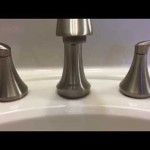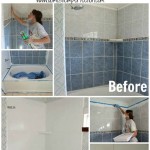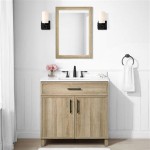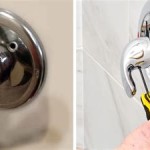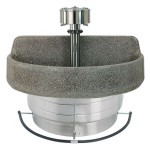Best Materials for Bathroom Furniture: Durability and Style
Selecting the right materials for bathroom furniture is crucial, considering the humid and moisture-prone environment. The chosen material must withstand these conditions while contributing to the desired aesthetic. This guide explores various materials used in bathroom furniture, highlighting their strengths, weaknesses, and applications to aid in making informed decisions.
Solid Wood: A Classic Choice with Considerations
Solid wood, renowned for its natural beauty and durability, remains a popular choice for bathroom furniture. Its inherent warmth and character can elevate the overall design of a bathroom. However, the use of solid wood requires careful consideration of wood type and treatment to prevent damage from moisture.
Hardwoods like oak, maple, cherry, and walnut are preferable to softwoods due to their density and resistance to water. Oak, in particular, offers excellent durability and a distinct grain pattern. Maple is known for its smooth, uniform texture and ability to take stains well. Cherry provides a rich, reddish hue and develops a beautiful patina over time. Walnut boasts a luxurious dark color and is highly resistant to warping.
Proper sealing and finishing are essential for solid wood furniture in bathrooms. Applying multiple coats of polyurethane or varnish creates a protective barrier against moisture penetration. Regular maintenance, including wiping down surfaces after use and promptly addressing any spills, is crucial to prolong the lifespan of solid wood furniture.
Despite its advantages, solid wood can be expensive and susceptible to expansion and contraction with changes in humidity. This movement can lead to cracks or warping if the wood is not properly acclimated or sealed. Therefore, choosing kiln-dried wood and employing expert craftsmanship are critical for ensuring the longevity of solid wood bathroom furniture.
Plywood: Engineered for Stability and Affordability
Plywood, an engineered wood product composed of multiple layers of wood veneers bonded together, provides a stable and cost-effective alternative to solid wood. Its cross-laminated construction minimizes the risk of warping and cracking, making it a suitable option for bathroom environments.
Marine-grade plywood, specifically designed for marine applications, offers superior water resistance compared to standard plywood. It utilizes waterproof adhesives and denser wood veneers, effectively preventing moisture penetration and delamination. While more expensive than regular plywood, marine-grade plywood offers enhanced durability and is ideal for areas directly exposed to water, such as vanity cabinets near sinks.
When using plywood for bathroom furniture, it is crucial to seal all edges and surfaces with a waterproof sealant or primer before painting or finishing. This prevents moisture from seeping into the core layers and causing damage. Properly sealed plywood can provide a smooth and stable surface for various finishes, including paint, veneer, and laminate.
Plywood is generally more affordable than solid wood, making it a popular choice for budget-conscious homeowners. Its dimensional stability and resistance to warping offer significant advantages in bathroom settings where humidity levels fluctuate. However, the aesthetic appeal of plywood often relies on the applied finish, as the edges may require concealing with edge banding or trim.
Medium-Density Fiberboard (MDF): A Smooth and Versatile Option
Medium-density fiberboard (MDF) is another engineered wood product made from wood fibers bonded together with resin under heat and pressure. MDF offers a smooth, uniform surface that is ideal for painting and laminating. Its consistent density makes it easy to cut, shape, and machine, allowing for intricate designs and details.
While MDF is less expensive than solid wood and plywood, it is also more susceptible to water damage. Prolonged exposure to moisture can cause MDF to swell and lose its structural integrity. Therefore, MDF is not suitable for areas directly exposed to water, such as shower surrounds or countertops.
To enhance the water resistance of MDF bathroom furniture, it is essential to apply multiple coats of primer and paint or to use a waterproof laminate coating. Sealing all edges and surfaces is crucial to prevent moisture penetration. MDF furniture should also be placed in well-ventilated areas to minimize humidity levels.
MDF is commonly used for cabinet doors, drawer fronts, and side panels in bathroom vanities. Its smooth surface provides an excellent base for painted finishes, allowing for a wide range of color options. However, the longevity of MDF furniture in bathrooms depends heavily on the quality of the sealing and finishing, as well as the overall humidity control in the room.
Laminate: Durable and Easy to Maintain
Laminate is a synthetic material consisting of multiple layers of paper or fabric impregnated with resin and bonded together under high pressure and heat. It is typically applied to a core material, such as plywood or MDF, to create a durable and water-resistant surface. Laminate is available in a wide range of colors, patterns, and textures, including realistic wood grain and stone finishes.
High-pressure laminate (HPL) is the most common type of laminate used for bathroom furniture. It is highly resistant to scratches, stains, and moisture, making it a practical choice for high-traffic areas. HPL is also easy to clean and maintain, requiring only a damp cloth and mild detergent.
Laminate bathroom furniture offers a cost-effective alternative to solid wood and stone materials. It provides a durable and aesthetically pleasing surface without the high cost and maintenance requirements of natural materials. Laminate is also resistant to fading and discoloration, ensuring that the furniture maintains its appearance over time.
When selecting laminate for bathroom furniture, it is important to choose a reputable brand that offers high-quality materials and construction. The edges of laminate surfaces should be sealed properly to prevent moisture from seeping into the core material. While laminate is water-resistant, it is not entirely waterproof, so it is important to avoid prolonged exposure to standing water.
Metal: Strength and Modern Appeal
Metal, particularly stainless steel and aluminum, offers durability, water resistance, and a modern aesthetic for bathroom furniture. Stainless steel is highly resistant to corrosion and rust, making it an excellent choice for humid environments. Aluminum is lighter than steel and also offers good corrosion resistance.
Stainless steel bathroom furniture is often used for shelving, towel racks, and vanity legs. Its sleek and minimalist appearance complements contemporary bathroom designs. However, stainless steel can be expensive and may show fingerprints and water spots.
Aluminum is commonly used for bathroom cabinets and shower frames. It is lightweight and easy to shape, allowing for a variety of designs. Powder-coated aluminum provides an additional layer of protection against corrosion and can be customized with various colors.
Metal bathroom furniture is easy to clean and maintain, requiring only a damp cloth and mild detergent. It is also resistant to mold and mildew, making it a hygienic option for bathrooms. However, metal can feel cold to the touch, which may not be desirable for some users.
Glass: Elegant and Easy to Clean
Glass, both tempered and frosted, offers a sleek and elegant touch to bathroom furniture. Tempered glass is significantly stronger than standard glass and shatters into small, relatively harmless pieces if broken, making it a safer option for bathrooms. Frosted glass provides privacy while still allowing light to pass through.
Glass is commonly used for shower doors, vanity tops, and shelving in bathrooms. Its smooth, non-porous surface is easy to clean and resistant to stains and mold. Glass can also be combined with other materials, such as wood or metal, to create unique and stylish designs.
Glass bathroom furniture can be expensive, particularly for custom-designed pieces. It is also important to handle glass carefully to avoid scratches and chips. Regularly cleaning glass surfaces with a glass cleaner will help maintain their clarity and shine.
The use of glass in bathroom furniture contributes to a bright and airy atmosphere. Its reflective properties can enhance the sense of space in smaller bathrooms. However, glass may show fingerprints and water spots, requiring frequent cleaning.
Stone: Luxurious and Durable
Natural stone, such as granite, marble, and quartz, offers a luxurious and durable option for bathroom countertops and vanities. Granite is known for its strength, heat resistance, and unique patterns. Marble provides a classic and elegant look but is more porous and susceptible to staining than granite.
Quartz, an engineered stone made from crushed quartz crystals and resin, offers a consistent color and pattern and is less porous than natural stone. Quartz is also resistant to scratches, stains, and heat, making it a practical choice for bathroom countertops.
Stone bathroom furniture is generally expensive but offers a long-lasting and high-end aesthetic. It is important to seal natural stone surfaces regularly to prevent staining and water damage. Cleaning stone countertops with a pH-neutral cleaner will help maintain their appearance.
The weight of stone countertops requires sturdy cabinets and supports. Proper installation is crucial to ensure the stability and longevity of stone bathroom furniture. Despite the higher cost, stone offers a timeless and luxurious look that can enhance the value of a bathroom.
Selecting the ideal material for bathroom furniture involves a careful evaluation of factors such as durability, moisture resistance, aesthetics, and budget. Each material offers unique advantages and disadvantages, and the best choice depends on the specific needs and preferences of the homeowner.

A Guide To Materials And Finishes For Bathroom Design Cafe

A Guide To Materials And Finishes For Bathroom Design Cafe

How To Choose The Best Material For Bathroom Fixtures

A Guide To Materials And Finishes For Bathroom Design Cafe

15 Stunning Bathroom Ideas 2024 Best Designs

What Is The Best Material For Bathroom Cabinets Comparison Of Several Commonly Used Materials

Why Bathroom Vanities Made From Alstone Wpc Last Forever
:max_bytes(150000):strip_icc()/grey-08207753dd3b407caadbbb47253586a3.jpg?strip=all)
30 Bathroom Cabinet Color Ideas From Basic To Bold

Atlanta Bathrooms Creating For Generations

Your Guide To 10 Popular Bathroom Styles
